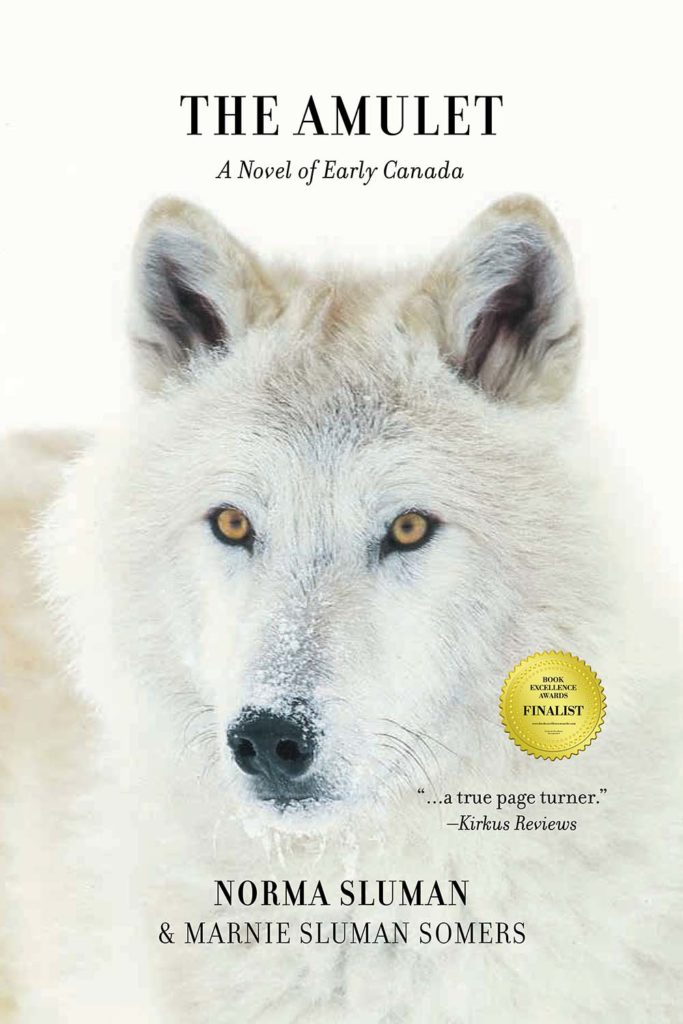
Marnie Sluman Somers was born in Toronto, Ontario and spent most of her early life moving around the prairies as her family followed her father’s football career with the Calgary Stampeders and the Edmonton Eskimos.
She loved the prairies so much that she moved to rural Manitoba in her early twenties and has lived there ever since. Marnie has worked in the public and private sector and became a full time freelance writer in 1997. She is the editor and publisher of The Amulet.
Why historical fiction? What makes this genre so special for you?
Well I didn’t really pick the genre, my mother did, but I love it. There’s this quote from Umberto Eco that says “The person who doesn’t read lives only one life. The reader lives five thousand.” That really sums up why historical fiction is so engaging for me. I love it because it allows me live someone else life, to see the world through their eyes. You just learn so much about other people’s culture and country and habits when you’re reading, things that you wouldn’t be exposed to otherwise. And I also I love the research and the learning of it.
“The person who doesn’t read lives only one life. The reader lives five thousand.”
-Umberto Eco
What was the process of publishing The Amulet like for you?
I had the typewritten manuscript. I read it at least a couple of times through trying to figure out what to do with it. I just ended up keeping it. I thought “Maybe I can do something with it someday.” I had some letters from her previous agent so I approached her about it. She liked the story. She thought it was a good read but she was semi-retired and didn’t think that the time was right in terms of the story being marketable. So that was a dead end. Then I started learning about self-publishing and all the advantages of that. I wanted to keep control of the book and I liked that aspect of self-publishing. I didn’t want to just hand it off to someone and have it sit in their office for years. The more I learned the more excited I got.
When I finally made the decision to self-publish I started by typing directly from her manuscript but I couldn’t resist the urge to tweak it and tie up loose ends, tidy up some parts and expand others. I typed verbatim to start with and then I edited chapter by chapter. And the whole time I was editing I was doing research about how to write better and developing myself as a writer. I’d done lots of writing in the past but it was all feature articles and brochures and things like that so this was new territory for me.
Once I was done with my part of the writing the editing got a lot more technical. I hired an editor and we did draft after draft of edits. We filled plot holes, looked for inconsistencies, filled in missing elements, worked on the dialogue, smoothed the language. We spent a lot of time working on the language around Indigenous people in the manuscript because we really wanted to make sure we were historically accurate but we also wanted to be respectful and uphold my mother’s intention which was to tell the story in way that moved readers to understand and support the rights of Indigenous people. She wanted to make a difference and we wanted to make sure that the language in the book supported that and that we weren’t perpetuating stereotypes.
How do you think your mother would feel about what you’ve done with The Amulet?
I feel really comfortable that she would approve of the edits and smaller plot changes I made to flesh out the story because I didn’t change anything about the perspective. I was really careful to keep everything consistent with what I knew of her feelings on the subject and the story itself is just as she told it. My family agrees with me that she’d be proud of what I’ve done.
What are you reading right now?
Five Wives by Joan Thomas. I love her writing and she’s a fellow Manitoban! There’s only one book left of hers that I haven’t read. This book in particular has a lot of themes that are similar to The Amulet. It’s a story of colonization and how problematic it is and that was one of the reasons why I liked it.
Have you published any other books?
I’ve also published Blackfoot Crossing and Poundmaker which are companion books to The Amulet. They were published by Ryerson Press while my mother was alive but we got permission from the publisher to do new editions. They aren’t a series and they can be read in any order. The stories fit together because the setting, the politics, and the time period are similar but each one brings a different perspective to the whole. The Amulet is from the perspective of Catherine, a newly arrived white settler. Blackfoot Crossing is from the perspective of Tahnea, a young Métis woman who lives with her Sioux family. Poundmaker tells the story of the famous Cree leader who tried to bring peace to the Canadian prairies. Historical figures such as Poundmaker, Big Bear, Sitting Bull, Crowfoot, and John Dewdney appear throughout all three stories.
Do you have plans to write more books?
There might be more stories coming in the not too distant future. I need to clear out some of the backlog in my business but I wouldn’t mind doing a follow up book to The Amulet. I’d love to explore what happens next in Jay and Catherine’s lives and what happens to their son. There are all kinds of interesting women at that time in history that could carry the book as a main character. I’m really excited to see where I could go with it.
To see what Marnie is up to and know where she’s at in her writing projects follow Historical Fiction on Instagram and Facebook.
Thanks for supporting us and sharing our work. We love being part of the Canadian writing community.
-Laurie, Associate Editor
Not a member of our FREE Book of the Month Club yet? What are you waiting for?
Want a chance to win a free book written by a different Canadian author? Join our Free Book of the Month Club! Every month we review a book by a Canadian author and give it away to one of our email subscribers. Our goal is to share the work of other Canadian authors to help readers find other writers.




